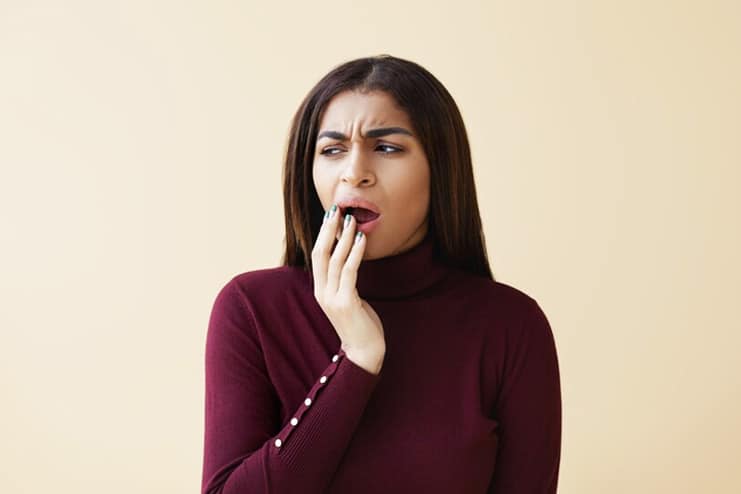Affiliate Disclaimer
Some links in this article are affiliate links. We may earn a small commission if you make a purchase through these links, at no extra cost to you. We only recommend products we find useful to our readersIn medical terminology, lie bumps, or transitory lingual papillitis, are small, painful lumps on the tongue. While they are harmless and typically resolve independently within a few days, their sudden appearance can be distressing. By understanding the underlying causes of lie bumps, individuals can take control and prevent their occurrence. This article will delve into eight primary factors contributing to the development of lie bumps, empower you with knowledge shedding light on their origins, and provide treatment options.
Understanding Lie Bumps
 Transitory lingual papillitis, also known as lie bumps, are tiny, painful lumps that appear on the tongue and cause worry and discomfort. These pimples, characterized by their white or red color and tendency to cluster on the tongue surface, often arise unexpectedly. Despite their alarming appearance, lie bumps are typically benign and resolve on their own within a few days without requiring medical attention.
Transitory lingual papillitis, also known as lie bumps, are tiny, painful lumps that appear on the tongue and cause worry and discomfort. These pimples, characterized by their white or red color and tendency to cluster on the tongue surface, often arise unexpectedly. Despite their alarming appearance, lie bumps are typically benign and resolve on their own within a few days without requiring medical attention.
Lie bumps are transient, appearing and disappearing relatively quickly. While their sudden appearance can be unsettling, it’s important to note that they rarely cause permanent damage. However, they can be uncomfortable, especially while eating or speaking.
It is critical to dispel prevalent myths about lie bumps, such as the misconception that lying causes them. Lie bumps have no connection to lying; instead, they are the result of various unrelated circumstances. Awareness of these myths can reduce unnecessary anxiety and misunderstandings when handling lie bumps.
The Eight Major Causes of Lie Bumps
Stress and Anxiety

Stress levels can have a significant impact on oral health. When under stress, the body releases hormones such as cortisol, which can trigger inflammatory responses in the mucous membranes of the tongue, potentially leading to the formation of lie bumps. Managing stress through relaxation techniques and stress-relieving activities can help mitigate these effects.
Spicy or Acidic Foods

Foods that are spicy or acidic can irritate the oral mucosa, which can cause pain and irritation that contribute to lie bumps. Certain foods, such as tomatoes, citrus fruits like oranges or lemons, and chili peppers are known to exacerbate or trigger this condition. Consume these foods in limited quantities and rinse your mouth with water after eating to reduce the likelihood of developing lie bumps.
Trauma or Injury

Physical traumas or injuries to the tongue, such as accidentally biting the tongue or aggressive brushing, can result in the development of lie bumps. Be careful with your dental hygiene routine and avoid behaviors that could harm the tongue.
Allergic Reactions

Allergic reactions to certain foods or oral care products can trigger an inflammatory response in the oral mucosa, contributing to lie pimples. Identifying and avoiding allergens such as nuts, shellfish, or ingredients contained in toothpaste and mouthwash, can help minimize the likelihood of developing them.
Hormonal Changes

Hormonal fluctuations, such as those that occur during puberty, menstruation, or pregnancy, have the potential to impact oral health and may contribute to the formation of lie bumps. Shifts in hormone levels can influence inflammatory reactions and immune function of the body, which may result in increased susceptibility to oral disorders such as lie bumps during these periods.
Poor Oral Hygiene

Exercising proper oral hygiene is crucial to preventing oral conditions such as lie bumps. Poor oral hygiene can lead to the buildup of bacteria and debris on the surface of the tongue, increasing the risk of inflammation and the formation of lie bumps.
Smoking or Tobacco Use

Tobacco use, including smoking and chewing tobacco products, can irritate oral tissues and mucous membranes and contribute to inflammation, potentially causing lie bumps. Quitting smoking and avoiding the use of tobacco products can enhance oral health and lower the chance of developing lie bumps.
Viral Infections

Common viral illnesses, such as the herpes simplex virus, can cause transitory lingual papillitis and result in the development of lie bumps. These infections may affect the oral mucosa and result in irritation and discomfort. Maintaining good oral hygiene and avoiding contact with people who are infected with viral illnesses can lessen the likelihood of acquiring tongue bumps.
Prevention and Treatment Options

The two most important things you can do to prevent lie bumps are adopting good dental habits and reducing exposure to potential triggers such as acidic or spicy foods. Maintain proper oral hygiene by brushing and flossing on a consistent basis, keep yourself hydrated, and learn how to manage your stress levels.
There are a number of over-the-counter medical treatments and home remedies that can provide relief to individuals experiencing discomfort caused by lie bumps. Rinsing the mouth with warm salt water solution can reduce pain and inflammation reduction. Mix half a teaspoon of salt in 8 ounces in warm water. Applying a paste made of baking soda and water to the affected area, can also be effective.
The use of numbing medications or oral gels available without a prescription can also provide brief relief from discomfort.
Seek medical advice if the lie bumps persist or become more severe. Cases of persistent or recurrent transient lingual papillitis may indicate an underlying health problem which requires additional investigation by a healthcare practitioner. In addition, you must get immediate medical attention if you experience lie bumps in conjunction with other symptoms such as fever or difficulty swallowing.
Conclusion
Understanding the causes of lie bumps is essential for effectively preventing and managing them. By recognizing the factors that cause them, such as stress, spicy or acidic foods, and hormonal changes, individuals can take preventative measures to reduce likelihood of developing these unpleasant bumps. While it is essential to acknowledge the temporary nature of lie bumps, it is important to seek medical advice when needed to maintain good dental health and overall well being.
-
July 2017Written by Prajakt
-
Aug 2024Edited by Ankita
In this Article

















